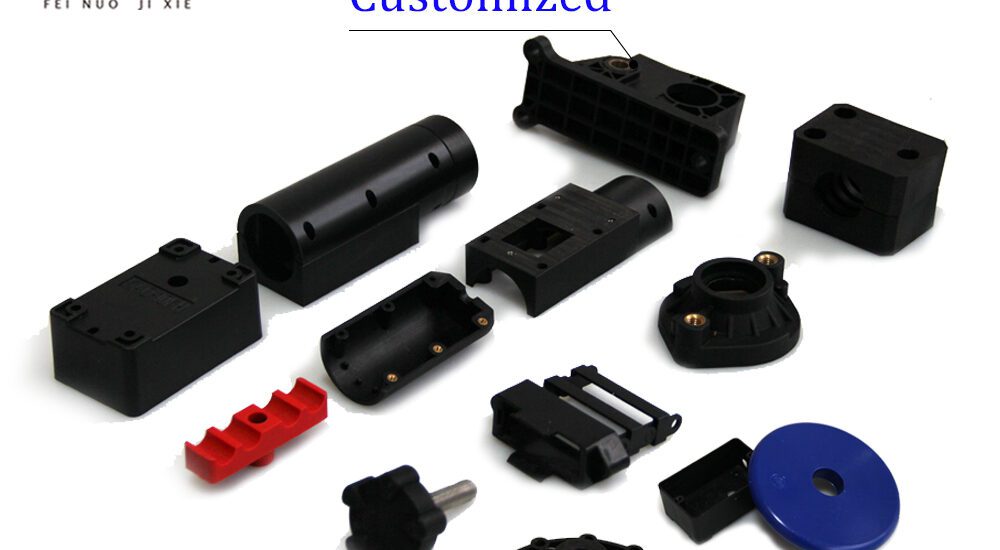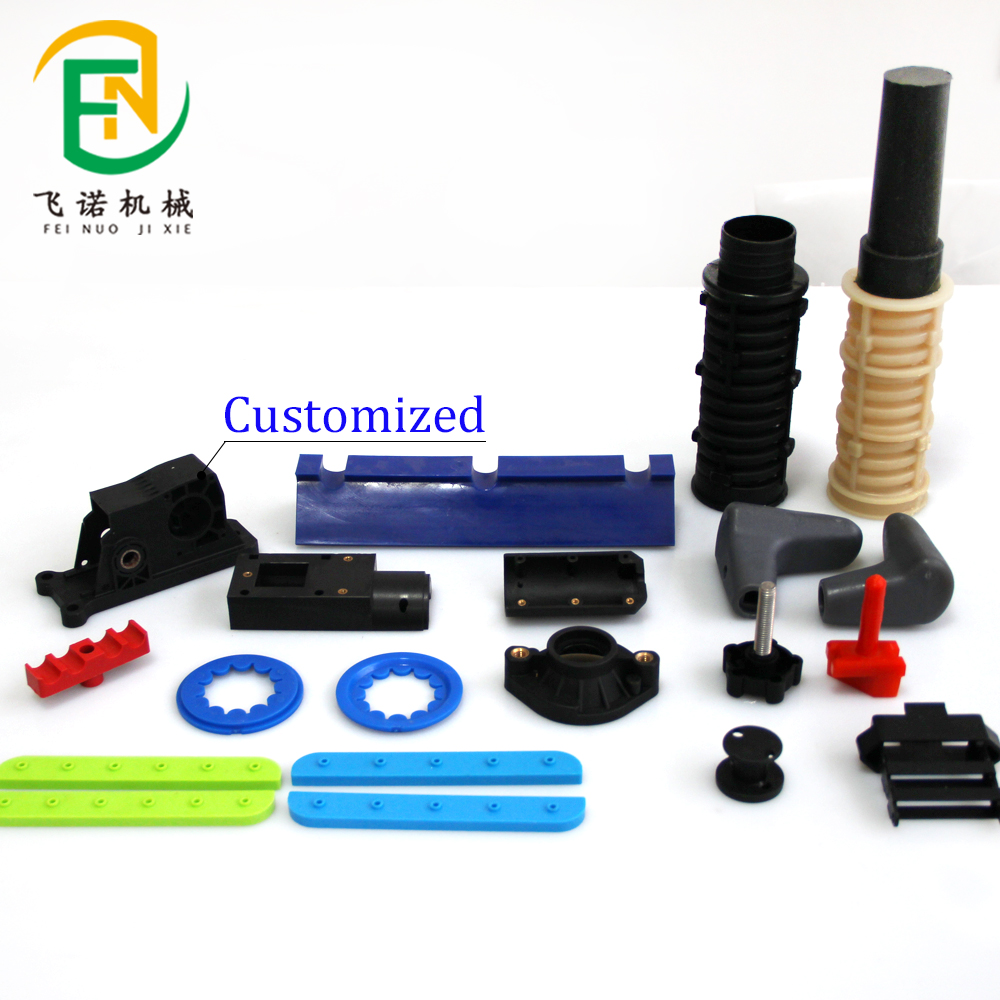- March 18, 2025
- Posted by: feinuojixie
- Category: Injection Molding News


ABS injection moulding is a widely used manufacturing process that enables the production of durable, high-quality plastic parts with precision and efficiency. Acrylonitrile butadiene styrene (ABS) is a thermoplastic polymer known for its excellent mechanical properties, making it an ideal material for industries ranging from automotive to consumer electronics.
This process involves melting ABS pellets and injecting the molten material into a mould cavity, where it takes shape and solidifies. The ability to create complex designs, maintain tight tolerances, and achieve excellent surface finishes makes ABS injection moulding a preferred choice for manufacturers seeking reliability and cost-effectiveness.
In this article, we will explore the key benefits of ABS injection moulding, discuss its challenges, and highlight best practices to optimize the process for superior results. Whether you are a manufacturer or an engineer looking to enhance your understanding of ABS injection moulding, this guide will provide valuable insights into mastering this essential plastic production technique.


Understanding ABS in Injection Moulding
Acrylonitrile butadiene styrene (ABS) is a widely used thermoplastic due to its unique combination of strength, impact resistance, and heat stability. These properties make ABS injection moulding an excellent choice for manufacturing high-quality plastic parts across various industries.
ABS is composed of three main monomers:
- Acrylonitrile, which provides chemical resistance and heat stability
- Butadiene, which enhances toughness and impact strength
- Styrene, which improves rigidity and processability
This balanced composition allows ABS to withstand mechanical stress while offering a smooth surface finish, making it ideal for both structural and aesthetic applications.
The ABS Injection Moulding Process
ABS injection moulding involves multiple stages, each of which plays a crucial role in ensuring a high-quality final product. Understanding these steps is key to mastering the process.
1. Material Preparation
Before injection moulding begins, ABS pellets must be dried properly to remove moisture. Excess moisture can cause defects such as bubbles or poor surface finish. Typically, ABS is dried at around 80–90°C for 2–4 hours to ensure optimal performance.
2. Melting and Injection
The dried ABS pellets are fed into the injection moulding machine, where they are heated to a temperature range of 200–250°C. The molten ABS is then injected into the mould cavity under high pressure to ensure even filling and minimal defects.
3. Cooling and Solidification
Once inside the mould, the ABS begins to cool and solidify. Proper cooling time and uniform cooling rates prevent issues like warping or shrinkage. A controlled cooling system within the mould helps maintain dimensional accuracy.
4. Ejection and Finishing
After solidification, the part is ejected from the mould. Some components may require post-processing, such as trimming excess material, polishing, or surface coating, to meet final product specifications.
Design Considerations for ABS Injection Moulding
Optimizing product design is critical in ABS injection moulding to ensure durability, aesthetics, and cost efficiency. Here are some key considerations:
- Wall Thickness: Maintaining uniform wall thickness prevents defects like warping and sink marks. The recommended thickness for ABS parts ranges from 1.2 to 3.5 mm.
- Gate Placement: The gate location affects how the molten ABS flows into the mould. Proper gate placement ensures even filling and minimizes air pockets.
- Draft Angles: Including a slight draft angle (typically 1–2° per side) helps with easy part ejection from the mould.
- Rib and Boss Design: Reinforcing structures such as ribs and bosses improve part strength while keeping material usage efficient.
Choosing the Right Mould for ABS Injection Moulding
Selecting the right mould type is essential for achieving precision and durability in ABS injection moulding. The most common materials for moulds include:
- Steel Moulds: Highly durable, ideal for high-volume production
- Aluminium Moulds: Cost-effective and suitable for low to medium production runs
- Beryllium-Copper Alloy Moulds: Excellent thermal conductivity, useful for complex designs
Temperature control within the mould is also vital. Proper cooling channels help regulate mould temperature, ensuring consistent part quality and reducing cycle time.
Optimizing Processing Parameters for ABS Injection Moulding
To produce high-quality ABS parts, manufacturers must fine-tune processing parameters, including:
- Injection Temperature: Should be kept between 200–250°C to ensure proper melting
- Injection Speed: A moderate injection speed prevents defects like burn marks or air traps
- Cooling Time: Allowing sufficient cooling time avoids warping and shrinkage
- Mould Temperature: Typically maintained between 50–80°C to balance cooling efficiency and part quality
Common Defects in ABS Injection Moulding and How to Fix Them
Even with careful processing, defects may occur. Understanding and addressing these issues can improve overall product quality.
- Warping: Caused by uneven cooling or stress during ejection. Solution: Optimize cooling time and improve mould design.
- Sink Marks: Occur when material shrinks in thick sections. Solution: Maintain uniform wall thickness and adjust packing pressure.
- Short Shots: Incomplete filling of the mould cavity. Solution: Increase injection pressure and ensure proper venting.
- Burn Marks: Result from excessive heat or trapped air. Solution: Reduce injection speed and improve venting.
Advantages of ABS Injection Moulding Over Other Plastics
ABS stands out among other thermoplastics due to its unique properties. When compared with materials like polypropylene (PP), polycarbonate (PC), and polyvinyl chloride (PVC), ABS offers:
- Better impact resistance than PP
- Higher heat resistance than PVC
- More cost-effective production compared to PC
Additionally, ABS is highly compatible with secondary processes such as painting, plating, and bonding, making it a versatile material for various applications.
Future Trends in ABS Injection Moulding
The field of ABS injection moulding is evolving with technological advancements and sustainability efforts. Key trends include:
- Eco-Friendly ABS Alternatives: Recycled ABS and biodegradable plastics are gaining popularity.
- Automation and AI in Manufacturing: Smart injection moulding machines improve efficiency and consistency.
- Advanced Cooling Technologies: New cooling methods enhance productivity and reduce cycle times.
Conclusion
Mastering ABS injection moulding requires a deep understanding of material properties, mould design, process optimization, and defect prevention. By refining each stage of the process, manufacturers can consistently produce high-quality ABS plastic parts that meet industry standards.
With advancements in technology and a growing focus on sustainability, the future of ABS injection moulding promises even greater precision, efficiency, and environmental responsibility. Whether in automotive, electronics, or consumer goods, ABS injection moulding remains a key manufacturing technique for durable and aesthetically appealing plastic components.
